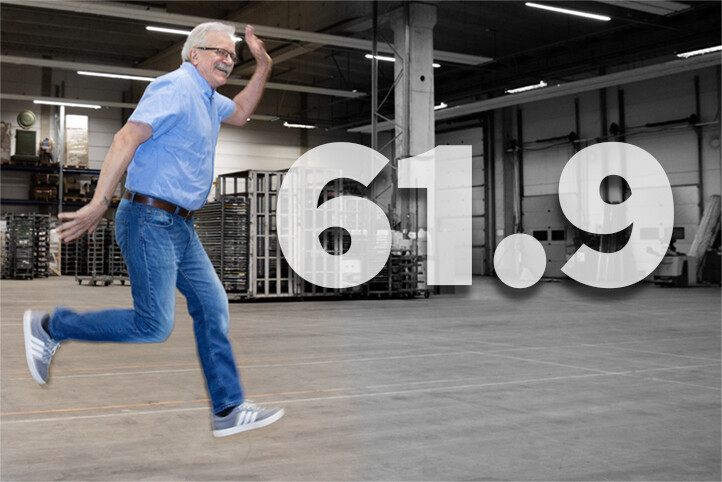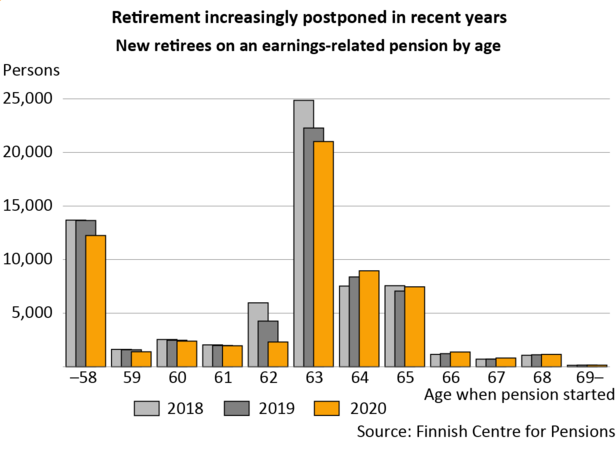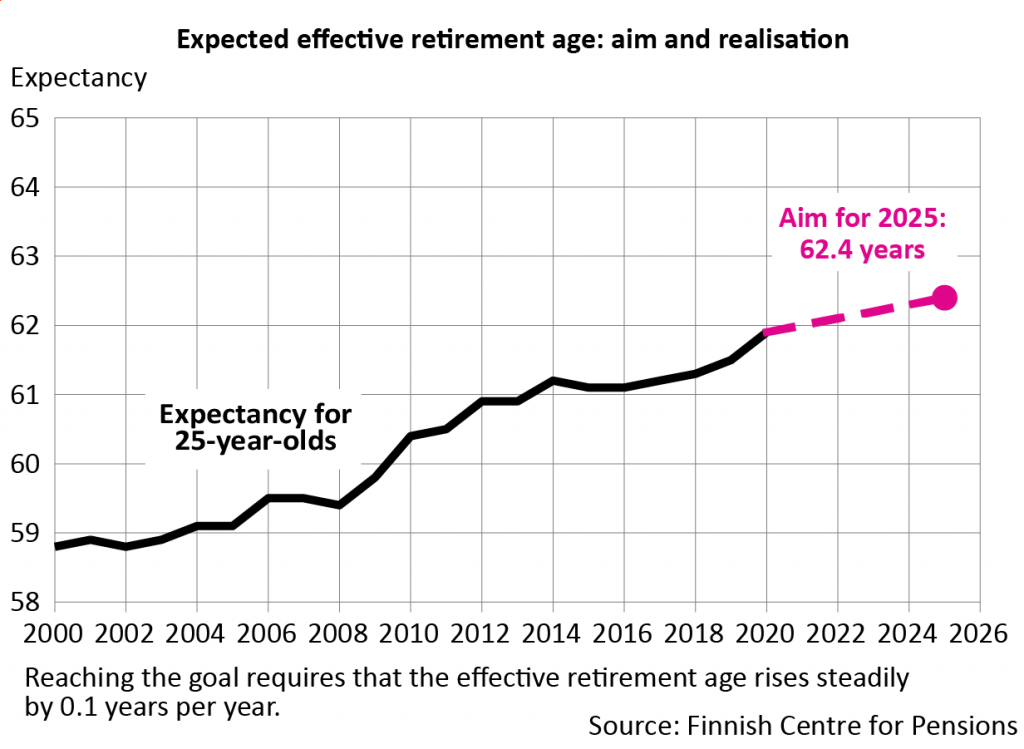Effective retirement age rose briskly in the year of the coronavirus

In 2020, Finns retired on an earnings-related pension five months later than in 2019, at 61.9 years on average. A total of 42,000 persons retired on an old-age pension, which is slightly fewer than in 2019. Continued working raised the employment rate among the elderly to a record-high level.
In 2020, the youngest people to be eligible for an old-age pension were those born in early 1957. Their retirement age (63 years and 9 months) is three months higher than that of the previous age cohort.
The increase of the retirement age agreed on in the 2017 pension reform has raised the average effective retirement age and reduced the number of new retirees on an old-age pension.
The effective retirement age rose exceptionally much in 2020. This increased the effective retirement age by five months compared to in 2019. In 2020, the average retirement age of Finns was 61.9 years, four tenths higher than in 2019.
The change in pension claim volumes was evident particularly after the corona summer. The number of old-age pension claims dropped steeply between August and the end of the year, partly due to the coronavirus.
Finns postponed retirement significantly in 2020. The corona pandemic may have affected retirement intentions. “Perhaps the prospect of more leisure time is less attractive in these exceptional times when having hobbies and travelling is not possible”, ponders development manager Jari Kannisto (Finnish Centre for Pensions).
The average effective retirement age has risen by three years since the beginning of the century. The aim is to reach an average effective retirement age of 62.4 years by 2025.
Number of new retirees on a disability pension declined
In 2020, approximately 61,000 persons retired on an earnings-related pension. Of them, 42,000 persons (69%) retired on an old-age pension, down by 2,000 persons (5%) from 2019.
The amount of new retirees on a disability pension declined by more than 1,000 persons compared with 2019. Around 19,000 persons retired on a disability pension, which was 6 per cent less than in 2019.
Employment rate strong among older people
Although the employment rate of the workforce was reduced due to the coronavirus, the pandemic seems not to have affected the employment rate of the older population to the same extent.
The employment rate of the 60–64-year-olds reached record-high levels again in 2020. It was nearly two percentage points higher than in 2019.
The employment rate of older people has risen already for a long time. Particularly the rising retirement age agreed on in the 2017 pension reform has extended working lives and improved the employment rate in recent years. Desipite the upward trend, Finland still lags behind other Nordic countries.
“We are not quite there yet, but we are going in the right direction. The rising retirement age has increased the employment rate of older people. For women, it is already at a good level. Finnish men lag behind those in other Nordic countries,” Kannisto explains.

Additional material:
- Effective retirement age in 2020 (SlideShare)
- More statistical data on the statistics pages of Etk.fi Effective retirement age and Earnings-related pension recipients in Finland (OSF)
Expected effective retirement age
- depicts the average retirement age if the retirement contingencies and the mortality rates remain on the level of the review year,
- is independent of the demographic age structure and calculated following the same principles and when calculating the expected life expectancy that measures life span, and
- measures the development of the effective retirement age on an earnings-related pension of the 25- and 50-year-olds.
Four facts about retirement on an earnings-related pension in 2019
- Roughly 61,000 persons retired on an earnings-related pension.
- The expected effective retirement age for a 25-year-old person was 61.9 years.
- The expected effective retirement age for a 50-year-old person was 63.8 years.
- Approximately 1.4 million individuals receive an earnings-related pension based on their own working life.
Note! People who have taken out a partial old-age pension are not included in the figure of new retirees.
Rising retirement age
In line with the 2017 pension reform, the retirement age will rise by three months per year until 2027, when the qualifying age for an old-age pension will be 65 years. After that, the retirement age will be linked to the average expected life expectancy.

- The aim was set at the negotiations between the government and labour market organisations in 2009 and confirmed in connection with the 2017 pension reform.
- Abolishing the unemployment pension and the reduced number of starting disability pensions have raised the effective retirement age. In the future, the rising retirement age will also raise the effective retirement age.
